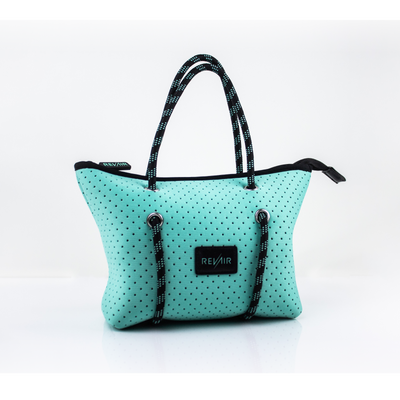
Hair Density 101
When it comes to hair, no two heads are the same. Some people have thick, voluminous locks, while others have fine strands that sit more flat against the scalp. These differences in how full or sparse your hair looks are directly linked to one crucial factor: hair density. But what exactly is hair density, and how does it affect your hair care routine? Understanding hair density is key to choosing the right products, hairstyles, and treatments that work best for your unique hair type.
Today we'll break down everything you need to know about hair density, how to determine yours, and the best ways to care for your hair based on its density.
What is Hair Density?
Hair density refers to the number of individual hair strands on your scalp. It’s often confused with hair thickness, but the two are different. While hair thickness describes the diameter of each individual hair strand (whether it's fine, medium, or thick), hair density focuses on how much hair you have in a specific area of your scalp.

The density of your hair can range from low, medium, to high:
-
Low density
Hair looks sparse and the scalp is easily visible when the hair is parted. -
Medium density
The scalp is somewhat visible, but the hair still covers it fairly well. -
High density
The hair is very full, and the scalp is not easily visible through the strands.
Each person is born with a set number of hair follicles, and genetics plays a significant role in determining your natural hair density. However, other factors such as age, health, and hair care habits can also influence changes in hair density over time.
How to Determine Your Hair Density
Determining your hair density is easy and can be done right at home. There are a couple of simple ways to test your hair density:
1. The Scalp Visibility Test
One quick method to check your hair density is by parting your hair in the middle and observing how much scalp is visible. If you can easily see your scalp, you likely have low-density hair. If only a small amount of scalp is visible, your hair is medium density. If you can barely see your scalp, then you probably have high-density hair.
2. The Ponytail Test
Another effective method for those with longer hair is to gather your hair into a ponytail and measure its circumference. This technique helps quantify how much hair you have in one section.
- A thin ponytail (under 2 inches in circumference) indicates low density.
- A medium ponytail (2 to 4 inches in circumference) suggests medium density.
- A thick ponytail (over 4 inches in circumference) indicates high density.
What Affects Hair Density?
While genetics is the main factor that determines hair density, other factors can impact how dense your hair appears over time. These include:
-
Age
Hair density naturally decreases as we age. This happens because hair follicles shrink or stop producing hair altogether, leading to a reduction in the number of active follicles on the scalp. -
Hair Loss
Conditions like alopecia or stress-related hair loss can affect hair density, causing thinning in certain areas or overall hair loss. -
Hair Care Practices
Overuse of heat styling tools, chemical treatments, or rough handling can damage hair, causing it to break and appear less dense. -
Diet and Health
A lack of essential nutrients like biotin, iron, and vitamin E can also lead to hair thinning and a decrease in hair density.
How Hair Density Affects Your Hair Care Routine
Now that you understand what hair density is, it’s important to adjust your hair care routine based on your specific density. Here's how to care for low, medium, and high-density hair:
Low Density Hair
If you have low-density hair, your scalp is more visible, and your hair may lack volume. The goal for low-density hair is to maximize fullness and avoid weighing your hair down.
Tips for Low-Density Hair
-
Use Lightweight Products
Choose volumizing shampoos and conditioners that won’t weigh your hair down. RevAir's Boost Fullness Revitalizing Shampoo is a great option for those with fine or thinning hair. It promotes scalp health and supports growth, helping to improve the appearance of density. -
Avoid Heavy Oils and Butters
These products can flatten your hair, making it look even less dense. -
Boost Volume
Consider using a volumizing mousse or root-lifting spray to add height at the roots. -
Gentle Styling
Low-density hair is often more fragile, so be gentle when brushing or styling to prevent breakage.
Medium Density Hair
With medium-density hair, you have a good balance of fullness and manageability. Your hair care routine should focus on maintaining this balance while promoting healthy growth.
Tips for Medium-Density Hair
- Moisturize and strengthen
Medium-density hair benefits from products that provide both hydration and strengthening properties. RevAir's Extreme Hydration Cleansing Oil Shampoo is ideal for keeping your hair moisturized and nourished, especially if you tend to style your hair with heat. - Regular trims
Keep your hair looking full by trimming split ends regularly, which will also help maintain volume. - Balanced styling
Medium-density hair can handle a variety of styles, from voluminous blowouts to sleek updos. However, be cautious not to overdo heat styling or chemical treatments, as these can damage the hair over time.
High Density Hair
High-density hair is naturally thick and full, but it can sometimes feel heavy and difficult to manage. The key to caring for high-density hair is to focus on keeping it moisturized while making sure it stays manageable.
Tips for High-Density Hair
-
Focus On Moisture
High-density hair can become dry, especially if it’s curly or textured. Use a deep conditioner regularly, such as RevAir's Extreme Hydration Deep Conditioning Treatment, to lock in moisture and keep your hair soft and manageable. -
Detangle With Care
With so much hair, tangling can be a common issue. Use a wide-tooth comb or a detangling brush to gently detangle from the ends up to avoid breakage. -
Protective Styles
Consider wearing your hair in protective styles like braids or twists to minimize manipulation and prevent breakage, especially if your hair is curly or coily. -
Embrace Your Volume
High-density hair has the advantage of being able to hold voluminous styles. Opt for styles that show off your hair’s natural fullness, such as big curls or bouncy blowouts.
How to Increase Hair Density
While it’s difficult to increase the number of hair follicles you’re born with, there are steps you can take to improve the appearance of hair density:
-
Eat A Balanced Diet
Incorporating foods rich in biotin, vitamin E, and iron can support healthy hair growth and strength. -
Scalp Care
A healthy scalp is essential for hair growth. Using a product like RevAir’s Boost Fullness Nourishing Scalp & Hair Conditioning Leave-In Treatment, which contains Biotin and Amino Acids, can promote scalp health and help support the appearance of thicker, fuller hair. -
Massage Your Scalp
Regular scalp massages can stimulate blood flow to the hair follicles, encouraging growth and improving density over time. -
Avoid Harsh Chemicals
Stay away from harsh chemical treatments that can damage your hair and reduce its density. Instead, opt for gentle, natural ingredients that nourish the hair and scalp.
With RevAir’s range of products tailored for all hair types, from moisturizing formulas to scalp-nourishing treatments, you can find the perfect products to support your hair density goals.













